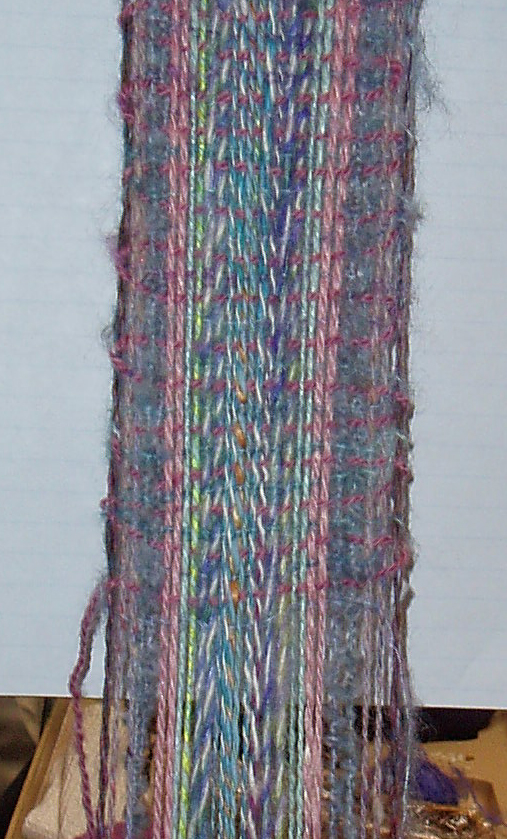Or, Don’t Sweat the Small Stuff.
I don’t know if it’s experience or laziness, but I’m finding that I’m less and less willing to rip out mistakes without taking a good hard look at the work before making the decision to rip.
When working short-row heels, sometimes I get uneven number of stitches remaining unworked on either side. I used to laboriously tink back to the start of the problem, if I can find it. If not, tink back to the start of the heel. Now? I just let it be. I realized that nobody will notice the off by one count, and it doesn’t affect the fit. So, why bother? (If it’s more than one off, I will likely tink back.)
When working heels in general, sometimes I will pick up an extra 1 or 2 stitches along each side to eliminate the gap. Who cares if the pattern says pick up x stitches? If x stitches cause a hole to happen, why not pick up x+1? You just need to do an extra set of decreases to get back down to the appropriate number. Believe me, that will be less noticeable than the hole. (Okay, this example is the inverse of the original premise of laziness.)
In my entrelac sampler from Kathryn Alexander’s class, there were a few squares that weren’t “square.” For some reason, instead of picking up y stitches, I picked up z because z seemed to be what was called for. After working the “square” it’s barely noticeable.
The other day, I was finishing off the triangle shawl I “designed” during Evelyn Clark’s “Designing Lace Triangles” class. It was a sampler of all the stock lace patterns in the book. When it was time to start the edging, I realized that I was short 2 stitches in the pattern repeat on either side of the center. Even under careful scrutiny, I couldn’t figure out where I went wrong. I don’t like to tink or rip unless I know exactly what I’m trying to fix and how far back it is. So, what did I do? Willy nilly picking up of the extra stitches would have been noticeable and unsightly. So, in the first row of the edging, I just didn’t do the 3-1 decrease on that last pattern repeat. Voila! I now have the right number of stitches. You can’t see the mistake unless you really look for it.
Sleeve increases/decreases. You know those “increase every 6th row” instructions, and you lose track somewhere between rows 4 and 7. Occasional slip ups can be made up in the following row. Really. It can. Decrease or increase in the next row. Honest. Unless you point it out, chances are that no one will notice.
So, unless the mistakes are structural, I may decide not to fix the mistake. I make that call as I go along. This isn’t to say that 20 rows past my decision point, I won’t change my mind again and decide that the mistake really needs to come out.
Right, wrong, laziness or experience. Call it what you will. But I will say that experience plays a large part of it. Only experience will tell me what I can and cannot get away with. And if I’m wrong, well, it’s more experience, right?
Either all that or I’ve finally learned to ease off a bit on my OC tendencies.

